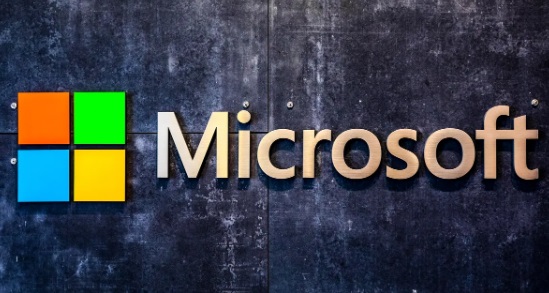Microsoft Stock Analysis

Introduction
Microsoft Corporation (MSFT) is a global technology powerhouse that has led the digital revolution for decades. From the widely-used Windows operating system and Office productivity suite to its Azure cloud computing platform and Xbox gaming console, Microsoft’s products and services are deeply integrated into daily life. However, even tech giants face challenges, including intense competition, evolving consumer preferences, and regulatory scrutiny.
This Microsoft stock analysis delves into the company’s Return on Equity (ROE) over recent years, its growth strategy, key strengths and weaknesses, and the competitive landscape it navigates.
Why is ROE Important in Microsoft Stock Analysis?
Return on Equity (ROE) is a crucial financial metric that measures a company’s profitability relative to shareholders’ equity. A higher ROE typically indicates better financial performance and stronger returns for investors holding MSFT stock. Thus, it plays a vital role in any comprehensive Microsoft stock analysis.
Microsoft Stock Analysis: ROE Trends
| Year | ROE (%) |
| 2013 | 29.1 |
| 2014 | 28.5 |
| 2015 | 27.8 |
| 2016 | 29.2 |
| 2017 | 30.5 |
| 2018 | 33.7 |
| 2019 | 37.6 |
| 2020 | 41.5 |
| 2021 | 47.2 |
| 2022 | 44.8 |
| 2023 | 42.0 |
| 2024 | 40.0 (Projected) |
This Microsoft stock analysis reveals a history of strong financial performance, reflected in its consistent ROE. Here are key takeaways from the ROE trends:
- Strong and Consistent Profitability: Microsoft has maintained a high ROE, consistently above 25%, indicating strong profitability and efficient management of shareholder investments.
- Upward Trend in Recent Years: The ROE trend has generally been upward, especially since 2017, demonstrating Microsoft’s strategic success in pivoting towards cloud computing and subscription-based services.
- Slight Moderation in 2024: The projected ROE for 2024 shows a slight dip, possibly due to increased investments in new technologies, competition, or the maturity of its core products.
When conducting a Microsoft stock analysis, it’s essential to evaluate these ROE trends alongside other financial metrics and qualitative factors like growth prospects and industry dynamics.
Understanding Microsoft’s Business
A thorough Microsoft stock analysis should consider the company’s strategic direction, key strengths, weaknesses, and competitive landscape.
Microsoft’s Mission:
“To empower every person and every organization on the planet to achieve more.”
Microsoft aims to empower individuals and organizations through technology, offering tools and solutions that enhance productivity, creativity, and innovation. The company focuses on four key areas:
- Cloud Computing: Expanding the Azure cloud platform to offer a wide range of services, including infrastructure, AI capabilities, and development tools.
- Productivity and Business Processes: Innovating in its Office suite and business applications, such as Microsoft 365 and Dynamics 365.
- Personal Computing: Maintaining leadership in the personal computing market with the Windows OS and Surface devices.
- Gaming: Expanding the Xbox ecosystem through cloud gaming and game development studios.
Strengths
- Strong Brand Recognition and Loyalty: Microsoft is one of the most recognized and trusted brands worldwide.
- Diversified Product Portfolio: The company’s portfolio includes operating systems, productivity software, cloud computing, gaming, and hardware, creating a resilient business model.
- Innovation and R&D Investments: Microsoft’s substantial investments in R&D foster innovation in AI, cloud computing, and quantum computing.
- Strong Financial Position: The company enjoys significant cash flow and financial resources, enabling growth initiatives and strategic acquisitions.
Weaknesses
- Intense Competition: Microsoft operates in a highly competitive industry, with rivals like Amazon, Google, and Apple.
- Regulatory Concerns: The company has faced antitrust scrutiny in the past and may face further challenges as it grows.
- Dependence on Key Products: Despite diversification, Microsoft’s performance heavily relies on core products like Windows and Office.
- Integration Challenges: Managing a wide range of products and acquisitions is complex and resource-intensive.
Competitive Landscape
This Microsoft stock analysis considers the company’s competition with major players such as:
- Amazon: A leading e-commerce and cloud services provider, competing with Microsoft’s Azure in cloud computing.
- Google (Alphabet): A dominant player in search, advertising, and mobile OS, competing with Microsoft in cloud computing, productivity software, and AI.
- Apple: A tech leader known for its hardware products, competing with Microsoft in personal computing, mobile devices, and digital content.
- Meta (Facebook): A social media giant, competing with Microsoft in areas like virtual reality, augmented reality, and the metaverse.
Key Projects Shaping Microsoft’s Future
The future of Microsoft hinges on its success in key projects:
- Azure Cloud Platform: Expanding Azure’s range of services to compete with Amazon Web Services (AWS) and Google Cloud Platform.
- Artificial Intelligence: Investing in AI capabilities and integrating them into products and services.
- Gaming: Expanding the Xbox ecosystem through game streaming services (Xbox Cloud Gaming) and game development studios.
- Metaverse Development: Developing platforms for the metaverse, such as Microsoft Mesh for mixed reality experiences.
Future Outlook
This Microsoft stock analysis highlights the company’s prospects. Microsoft’s future success depends on its ability to innovate, adapt to market changes, and compete effectively. Key factors influencing its future include:
- Cloud Computing Growth: Continued growth in the cloud computing market is crucial for Microsoft, as it faces stiff competition from AWS and Google Cloud.
- AI and Emerging Technologies: Leveraging AI and other emerging technologies will be essential for future growth and competitiveness.
- Competitive Dynamics: Microsoft must continue differentiating its products and services to maintain its competitive edge.
Conclusion: Is Microsoft (MSFT) Stock a Good Investment?
Microsoft is a technology giant with a strong track record of innovation and financial performance. The company is well-positioned to capitalize on the growth of cloud computing, artificial intelligence, and other key technology trends. However, investors should carefully consider the risks and opportunities, weighing factors such as competition, regulatory challenges, and rapid technological advancements.

